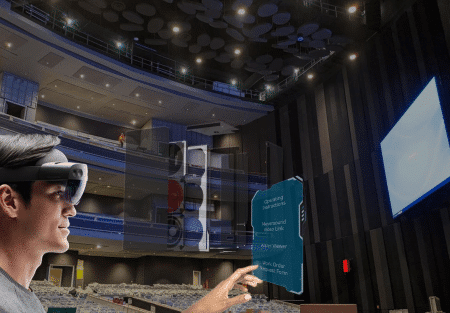
Advanced robotics is already a part of many production environments. But their importance will increase over time. These robots are most useful in discrete manufacturing. A manufacturer of sealing materials uses 40 robots to unload and load machines. Meanwhile, cloud-edge technologies and new design processes open the door to autonomous production processes. BCG is currently exploring these possibilities in a joint venture with Amazon Web Services and NXP Semiconductors.
Robots with adaptive capabilities
Adaptive robots combine computer vision, AI, and force control to complete complex tasks in complex environments. This high level of adaptivity has many benefits including improved productivity, consistency in performance, flexibility, redundancy of safety precautions, and increased productivity. Companies are already using adaptive robots to improve their productivity, safety, and streamline their assembly lines. Here are the top benefits of adaptive robotics. These robots are already changing the manufacturing industry.

Articulated robots
There are many advantages to using articulated bots. Also, these robots can do so much. These robots can be used for many purposes and are particularly useful for small and medium-sized businesses. SME's are becoming the biggest employer in manufacturing facilities. They are also among those industries that have yet to fully embrace the benefits of automation. Articulated robots are ideal for applications such as packaging, assembly, and material handling, as they can do so quickly and efficiently.
Repliee robots
Repliee robots offer a more natural appearance and movement. The Q1 model's upper body has 31 degrees of freedom, which allows it to imitate human-like motions like breathing. Repliee Q1 is made with silicone skin, which replicates human body contours. For safer interactions, the robot has air actuators. Highly sensitive tactile sensors enable it to make contact.
Algorithms for adaptive software
Adaptive software algorithms are robots that automatically determine the most efficient path to reach their destination. It uses mission specifications to generate an initial plan and then adapts based on the environment. The planner can help the robot navigate around obstacles by creating a new path. It also makes future decisions based off the information it has learned. It allows highly-configurable autonomous robotics to learn from new environments and adapt accordingly.

Human-machine interfaces
The importance of human-machine interfaces to advance robots is increasing as the world moves towards a collaborative future in which robots work closely with humans. These interfaces are able to allow humans and robots to communicate in a variety of settings, including at work, home, and for leisure. This future is possible only if robots and human-machine interaction are improved. This field is in constant development.
FAQ
Who invented AI and why?
Alan Turing
Turing was first born in 1912. His father was a priest and his mother was an RN. At school, he excelled at mathematics but became depressed after being rejected by Cambridge University. He discovered chess and won several tournaments. After World War II, he was employed at Bletchley Park in Britain, where he cracked German codes.
He died in 1954.
John McCarthy
McCarthy was conceived in 1928. Before joining MIT, he studied maths at Princeton University. He developed the LISP programming language. By 1957 he had created the foundations of modern AI.
He died in 2011.
What is the role of AI?
An artificial neural system is composed of many simple processors, called neurons. Each neuron receives inputs form other neurons and uses mathematical operations to interpret them.
Neurons are organized in layers. Each layer performs a different function. The first layer receives raw information like images and sounds. These are then passed on to the next layer which further processes them. Finally, the output is produced by the final layer.
Each neuron has an associated weighting value. This value is multiplied each time new input arrives to add it to the weighted total of all previous values. If the result is greater than zero, then the neuron fires. It sends a signal along the line to the next neurons telling them what they should do.
This cycle continues until the network ends, at which point the final results can be produced.
What can AI be used for today?
Artificial intelligence (AI), which is also known as natural language processing, artificial agents, neural networks, expert system, etc., is an umbrella term. It is also called smart machines.
The first computer programs were written by Alan Turing in 1950. He was curious about whether computers could think. In his paper, Computing Machinery and Intelligence, he suggested a test for artificial Intelligence. The test asks if a computer program can carry on a conversation with a human.
In 1956, John McCarthy introduced the concept of artificial intelligence and coined the phrase "artificial intelligence" in his article "Artificial Intelligence."
Today we have many different types of AI-based technologies. Some are simple and easy to use, while others are much harder to implement. They include voice recognition software, self-driving vehicles, and even speech recognition software.
There are two main types of AI: rule-based AI and statistical AI. Rule-based uses logic in order to make decisions. A bank account balance could be calculated by rules such as: If the amount is $10 or greater, withdraw $5 and if it is less, deposit $1. Statistics is the use of statistics to make decisions. A weather forecast might use historical data to predict the future.
Are there any AI-related risks?
It is. There always will be. AI could pose a serious threat to society in general, according experts. Others argue that AI is necessary and beneficial to improve the quality life.
AI's misuse potential is the greatest concern. The potential for AI to become too powerful could result in dangerous outcomes. This includes things like autonomous weapons and robot overlords.
AI could eventually replace jobs. Many fear that AI will replace humans. Others believe that artificial intelligence may allow workers to concentrate on other aspects of the job.
Some economists even predict that automation will lead to higher productivity and lower unemployment.
What is the state of the AI industry?
The AI industry is growing at a remarkable rate. It's estimated that by 2020 there will be over 50 billion devices connected to the internet. This means that everyone will be able to use AI technology on their phones, tablets, or laptops.
Businesses will need to change to keep their competitive edge. Companies that don't adapt to this shift risk losing customers.
The question for you is, what kind of business model would you use to take advantage of these opportunities? Could you set up a platform for people to upload their data, and share it with other users. Perhaps you could also offer services such a voice recognition or image recognition.
Whatever you decide to do in life, you should think carefully about how it could affect your competitive position. You won't always win, but if you play your cards right and keep innovating, you may win big time!
Statistics
- That's as many of us that have been in that AI space would say, it's about 70 or 80 percent of the work. (finra.org)
- Additionally, keeping in mind the current crisis, the AI is designed in a manner where it reduces the carbon footprint by 20-40%. (analyticsinsight.net)
- According to the company's website, more than 800 financial firms use AlphaSense, including some Fortune 500 corporations. (builtin.com)
- The company's AI team trained an image recognition model to 85 percent accuracy using billions of public Instagram photos tagged with hashtags. (builtin.com)
- While all of it is still what seems like a far way off, the future of this technology presents a Catch-22, able to solve the world's problems and likely to power all the A.I. systems on earth, but also incredibly dangerous in the wrong hands. (forbes.com)
External Links
How To
How to build a simple AI program
You will need to be able to program to build an AI program. There are many programming languages out there, but Python is the most popular. You can also find free online resources such as YouTube videos or courses.
Here's a quick tutorial on how to set up a basic project called 'Hello World'.
You'll first need to open a brand new file. This is done by pressing Ctrl+N on Windows, and Command+N on Macs.
In the box, enter hello world. To save the file, press Enter.
For the program to run, press F5
The program should say "Hello World!"
But this is only the beginning. These tutorials will help you create a more complex program.